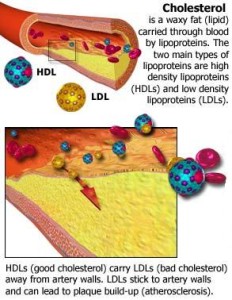 The project “Mathematical Modelling of HDL cholesterol in males and females” has been funded by the MILES programme in November. Some background on the project follows. Cardiovascular disease is the leading cause of death in the world (WHO, 2009). One of the many risk factors is low HDL cholesterol. HDLs are a heterogenous group of particles that are in dynamic flux in the circulation. The current understanding of the causes of low HDL and the metabolism of HDL is very poor. Using an isotope dilution protocol HDL, kinetics is studied in vivo in humans. In this project, a mathematical model will be developed and used to estimate the secretion and clearance of HDL subclasses and to identify the cause of gender differences. This will be the first step in a much larger collaboration which will take a systems biology approach to modelling cholesterol metabolism in vivo.
The project “Mathematical Modelling of HDL cholesterol in males and females” has been funded by the MILES programme in November. Some background on the project follows. Cardiovascular disease is the leading cause of death in the world (WHO, 2009). One of the many risk factors is low HDL cholesterol. HDLs are a heterogenous group of particles that are in dynamic flux in the circulation. The current understanding of the causes of low HDL and the metabolism of HDL is very poor. Using an isotope dilution protocol HDL, kinetics is studied in vivo in humans. In this project, a mathematical model will be developed and used to estimate the secretion and clearance of HDL subclasses and to identify the cause of gender differences. This will be the first step in a much larger collaboration which will take a systems biology approach to modelling cholesterol metabolism in vivo.
This project is a collaboration between Philip Aston and Gianne Derks, from the Department of Mathematics and Fariba Shojaee-Moradie and Margot Umpleby from the Department of Nutrition and Metabolism. It is funded by MILES – Models and Mathematics in Life and Social Sciences
